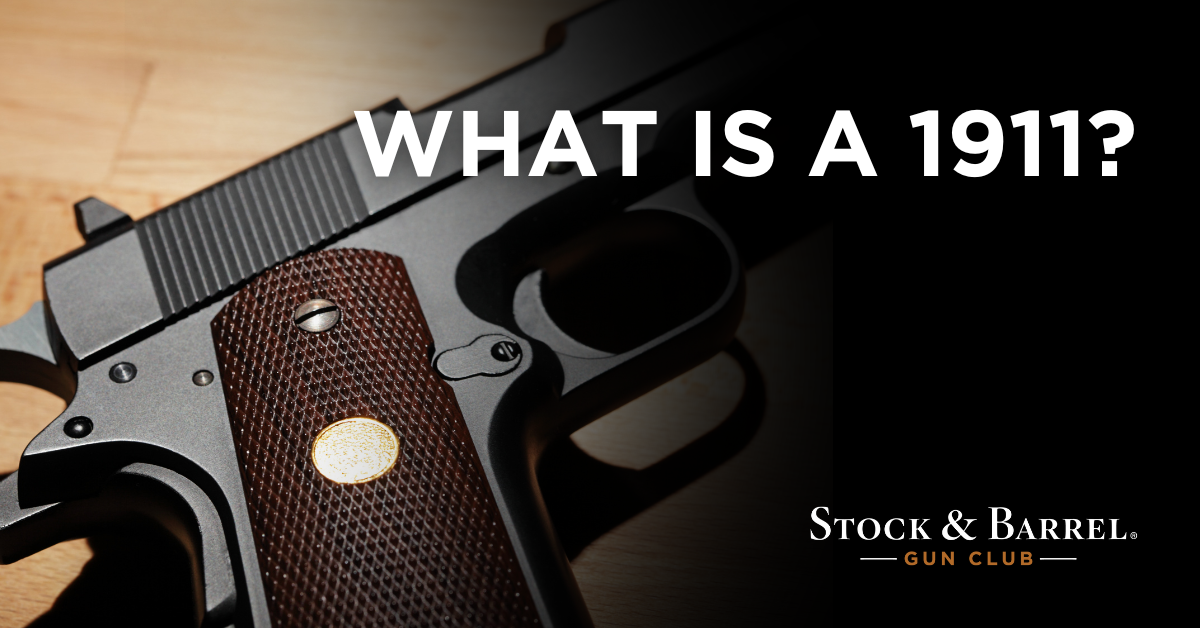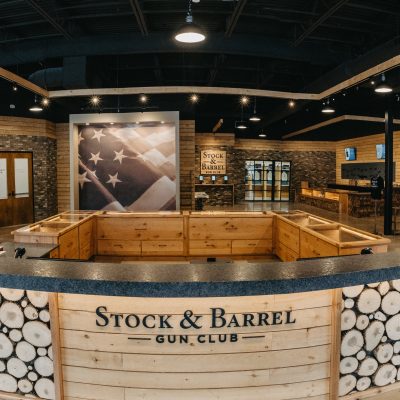Colloquially referred to as “America’s pistol” or “the gun that won two world wars” the 1911-style pistol is a staple of American firearms heritage. Like the single-action revolver, Tommy gun, M1 Garand, or M16, its shape is instantly recognizable, and it’s status legendary in the annals of gun culture. But for all the love we heap on one of John Browning’s most iconic designs, it is equally maligned as too big, too heavy, unreliable, unwieldy, or just plain obsolete. What makes this revered sidearm so unique is a combination of ingenuity and provenance.
What’s in a name?
The brainchild of famous American firearms design John Moses Browning, the 1911 was one of several first-gen semiautomatic pistols released during the late 1890s and early 1900s. The pistol’s numerical designation does not come from the year it was designed, or released, but rather the year it was adopted as the US Army’s standard issue service pistol. Many turn-of-the-century, self-loading pistols were built in small calibers: .25 and .32 caliber, and eventually .355 caliber which we now know as nine-millimeter. But during this period, the US was engaged in a war in the Phillipines, against the Moro tribesmen, and American soldiers were learning the hard way that these smaller bullets weren’t up to the task. Historical accounts and anecdotal evidence both point to a number of issues. Thick jungle underbrush could deflect small, light bullets mid-flight. Additionally, the Moro tribesmen were not only fierce fighters but reportedly used drugs to numb themselves to pain. There are also some stories about the Moro wrapping their torsos in bamboo chutes to create ad hoc body armor that was capable of stopping small-caliber rounds. To combat these issues, some military units dusted off their Single Action Army revolvers from the previous century, which were chambered in .45 Colt and reportedly worked better in the Philippine jungles. This experience heavily influenced military weapons procurement in years leading up to WWI, and when the Army set out to adopt a new standardized sidearm, it would be required to shoot a .45 caliber bullet. The pistol that was eventually chosen, a 7-shot semiautomatic, fired a shortened rimless version of the .45 Colt cartridge known as the .45 Automatic Colt Pistol (ACP). That handgun was adopted as the military’s issued sidearm in…you guessed it…1911. This practice of using the adoption or invention year of a gun to name it was common in the early 20th century. In addition to the M1911 pistol, you may have heard of the M1919 Browning machine gun or the M1928 Thompson submachine gun, made famous by the gangsters of the roaring 20s.
It’s what’s inside that counts…
Browning’s design is equally—if not more—important to discerning what makes a 1911. Like the majority of semiautomatic pistol designs, it uses recoil energy to operate the action. In accordance with Newton’s 3rd law, the energy used to propel the bullet forward also pushes the slide and barrel assembly rearward. At a certain point in this motion, a rotating link pinned to the bottom of the barrel tilts the barrel down, unlocking it from the slide. Modern designs have simplified the concept, largely doing away with lugs or links on the barrel in favor of a single lug of locking block below the chamber. But despite a century of industrial evolution happening around it, no significant changes have been made to the 1911 design. Its hammer-fired, single-action-only mechanism is still praised for its light, crisp, consistent trigger pull, and still includes the dual grip and manual safeties required by the military at time of adoption. Later iterations of the action included various types of firing pin blocks to enhance safety in the case of accidental drops. But even today many 1911 purists eschew these variants because they make the gun more complicated to work on and can negatively affect trigger pull.
One thing that has changed over the years is chamberings. While .45 caliber continues to hold a near-legendary status among some shooters, by the end of prohibition, the first divergence occurred with the advent of .38 Super in the last 1920s. Since then, 1911 pistols have been chambered in all kinds of calibers from 9mm Parabellum to .30 Luger, .400 Cor Bon, and .50 GI. In recent years, 9mm has taken over as the most popular commercial chambering for 1911 pistols. Increased capacity (10 rounds in a single-stack magazine, instead of 7 or 8), reduced recoil, and lower ammo costs are all highly attractive benefits – especially when you can retain the 1911’s exemplary single-action trigger.
But, well into the 21st century, .45 caliber 1911 pistols rode in military and law enforcement duty holsters with regularity. Elite units like Delta Force, FBI SWAT, and Marine Force Recon carried .45ACP 1911s for years – some were still using their .45s less than a decade ago.
The Future of the Past…
While there have been great improvements in material quality and manufacturing tolerances, only a few hard physical changes have been made to the 1911’s form. The two biggest ones are rail frames (to accommodate weapon-mounted lights) or adapter systems on the slide to mount red dot optics. Minor internal changes like the advent of the one-piece guiderod or captured recoil systems add some refinement but don’t offer anything different in terms of cycle-of-operations. If there’s one take away from the utter lack of major alterations to the design, it’s that even more than 100 years later you’d be hard pressed to wrong relying on this classically American design in any situation. If you’ve never handled one, next time in your either the Chanhassen or Eagan club, stop by the rental counter and try one out.
OTHER BLOGS YOU WILL FIND OF INTEREST:
- Sizes and Styles of Handguns; Which is best for you
- Collectible Firearms, What Makes Them?
- Selecting a Handgun
CLASSES YOU MAY BE INTERESTED IN:
- Intermediate Handgun Shooting Skills in Chanhassen or Eagan
- Modern Handgun Maintenance in Chanhassen or Eagan
- Clearing Handgun Malfunctions in Chanhassen or Eagan





